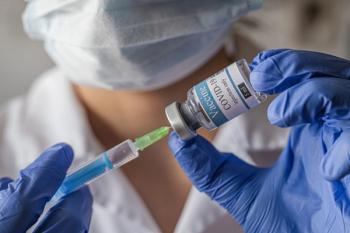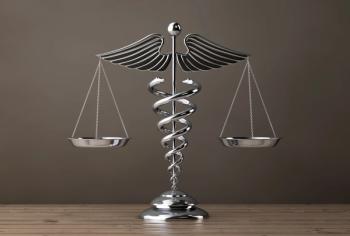
Pharmacists Play an Important Role in Managing Patients Taking Opioids With Benzodiazepines
Benzodiazepines are involved in over 30% of opioid overdoses. It is important to learn about this combination and how to counsel patients.
Every day, pharmacists are faced with patients who take opioids with benzodiazepines, and we know that the opioid epidemic is at an all time high.
According to the NIH National Institute on Drug Abuse, in 2017, there were 70,237 deaths in the United States due to drug overdose by select prescription and illicit drugs.1 This was a 12.9-fold increase from 2007 to 2017.1 Drug overdose deaths related to opioids (prescription opioids including methadone, synthetic opioids, and heroin) increased from 18,515 deaths in 2007 to 47,600 deaths in 2017.1 Every day, approximately 130 people in the United States will die as a result of drug overdose.2
In 2017, benzodiazepines, in combination with an opioid, were involved in 11,537 deaths.1 It is estimated that more than 30% of opioid overdoses involve benzodiazepines.3 Between 1996 and 2013, there was a 67% increase in benzodiazepine prescriptions filled, from 8.1 million to 13.5 million.3
The opioid/benzodiazepine combination is a very dangerous one: both types of drugs sedate patients as well as suppress breathing, which is the cause of overdose fatality. This combination can also impair cognitive functions.3 Patients using both drugs together are at higher risk of visiting the ER or being admitted to the hospital for a drug-related emergency.
A retrospective study done by the University of Pittsburgh School of Pharmacy showed that there is a 5-fold increase in overdose risk associated with the opioid/benzodiazepine combination in the first 90 days. The researchers recommend that when concomitant administration with opioids and benzodiazepines is necessary, patients should be closely monitored, especially in the first few days.4
The CDC recommends that physicians do not prescribe opioids and benzodiazepines together, whenever possible. The FDA requires black box warnings on over 400 prescription drugs, including opioids, benzodiazepines, and cough medications.
“FDA is warning patients and their caregivers about the serious risks of taking opioids along with benzodiazepines or other central nervous system (CNS) depressant medicines, including alcohol. Serious risks include unusual dizziness or lightheadedness, extreme sleepiness, slowed or difficult breathing, coma, and death. These risks result because both opioids and benzodiazepines impact the CNS, which controls most of the functions of the brain and body.”5
Pharmacists can play an important role in prevention of overdose with opioids/opioids plus benzodiazepines:
- Recommend to our patients who receive opioids that they carry naloxone at all times, in the event of overdose. Be sure the patient's loved ones know how to use it.
- As busy as we are, checking the state PMP is always important, as is always being alert for red flags.
- Any time a patient starts a new prescription for either an opioid or benzodiazepine, and is already taking the other, we should take the time to do our due diligence. Call the physician, and ensure he/she is aware of the concurrent opioid/benzodiazepine treatment, especially if different doctors prescribed each medication. Even if prescribed by the same doctor, it is always a good idea to follow up with a call to remind the doctor of the danger and ensure the patient is being closely monitored, especially at the beginning of treatment. Always document notes on the prescription and place a note in the computer. Ask if there is a plan to taper.
- Stress the importance of avoiding alcohol, as well as avoiding driving and operating heavy machinery, while taking these medications (alone or together).
- Pharmacists may want to review the Beers Criteria and keep these medications in mind while filling prescriptions for those patients over age 65 years.
- Counsel patients on every fill, remind them to keep an updated medication list, and encourage them to speak with their physician(s) about the possibility of being able to taper some of these medications for their own safety
- Emphasize the importance of using 1 pharmacy—even though we have the state PMP at our fingertips, using 1 pharmacy is much more beneficial to the patient in terms of drug interaction screening and facilitating communication with the pharmacist and pharmacy team
References
- NIH National Institute on Drug Abuse: Overdose Death Rates. https://www.drugabuse.gov/related-topics/trends-statistics/overdose-death-rates. Updated January 2019. Accessed March 20, 2019
- CDC: Opioid Overdose. https://www.cdc.gov/drugoverdose/epidemic/index.html. Updated December 19, 2018. Accessed March 20, 2019
- NIH National Institute on Drug Abuse: Benzodiazepines and Opioids. https://www.drugabuse.gov/drugs-abuse/opioids/benzodiazepines-opioids. Updated March 2018. Accessed March 20, 2019
- JAMA Network Exposure-Response Association Between Concurrent Opioid and Benzodiazepine Use and Risk of Opioid-Related Overdose in Medicare Part D Beneficiaries. https://jamanetwork.com/journals/jamanetworkopen/fullarticle/2685628. Published June 22, 2018. Accessed March 20, 2019
- US Food & Drug Administration: New Safety Measures Announced for Opioid Analgesics, Prescription Opioid Cough Products, and Benzodiazepines. https://www.fda.gov/drugs/drugsafety/informationbydrugclass/ucm518110.htm. Updated August 31, 2016. Accessed March 20, 2019
Newsletter
Stay informed on drug updates, treatment guidelines, and pharmacy practice trends—subscribe to Pharmacy Times for weekly clinical insights.
















































































































































































































